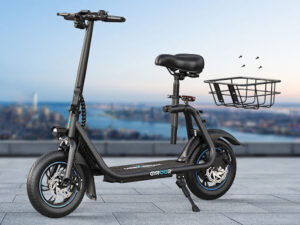In the quest for greener, more efficient urban transportation, electric scooter sharing programs have emerged as a dynamic and eco-friendly solution.
This article delves into the world of electric scooter sharing, exploring its benefits, challenges, and the transformative impact it has on shaping the future of urban mobility.
The Advantages of Electric Scooter Sharing
- Sustainable Urban Mobility: Electric scooter sharing aligns with the global push for sustainable transportation, providing an eco-friendly alternative to traditional gas-powered vehicles.
- Reduced Traffic Congestion: By offering a flexible and nimble mode of transportation, electric scooters contribute to alleviating traffic congestion in urban areas, especially during peak hours.
- Affordability and Accessibility: Electric scooter sharing is often a cost-effective option for short-distance travel, catering to a wide range of users who can access scooters easily using dedicated smartphone apps.
- Last-Mile Connectivity: Solving the “last-mile” challenge, electric scooters seamlessly connect commuters to their final destinations, complementing existing public transportation networks.
Challenges and Solutions:
- Regulatory Frameworks: Establishing clear and effective regulations is crucial for the successful implementation of electric scooter sharing programs. Collaboration between operators, city authorities, and other stakeholders is essential for addressing regulatory challenges.
- Safety Concerns: Promoting safe riding practices and enforcing helmet use are vital components of ensuring the safety of electric scooter users. Education campaigns and technology solutions, such as speed limitations in crowded areas, can contribute to safer rides.
- Parking and Maintenance: Encouraging responsible parking behavior and implementing designated parking zones can mitigate issues related to cluttered sidewalks. Regular maintenance schedules and efficient fleet management systems are essential for keeping scooters in optimal condition.
Technological Innovations:
- IoT and Connectivity: The integration of the Internet of Things (IoT) facilitates real-time monitoring of scooter fleets, enabling operators to track usage patterns, address maintenance needs promptly, and optimize scooter distribution.
- Navigation and Geofencing: Advanced navigation systems and geofencing technology help guide riders to appropriate areas for parking and prevent scooter usage in restricted zones, enhancing overall operational efficiency.
- Payment Systems: Seamless and secure mobile payment systems integrated into smartphone apps simplify the rental process, making electric scooter sharing an accessible and user-friendly option.
Future Outlook:
- Expansion of Fleets: As electric scooter sharing gains popularity, cities can expect the expansion of fleets, providing increased availability and accessibility to users.
- Integration with Public Transit: Electric scooter sharing programs are increasingly being integrated into existing public transportation networks, creating a holistic and interconnected urban mobility system.
Conclusion
Electric scooter sharing represents a significant leap forward in reshaping the way people navigate urban environments.
Embracing sustainability, affordability, and accessibility, these programs are not just a mode of transportation but a key player in the ongoing evolution towards smarter, greener cities.
As technology and infrastructure continue to advance, electric scooter sharing is poised to play an integral role in the future of urban mobility.



